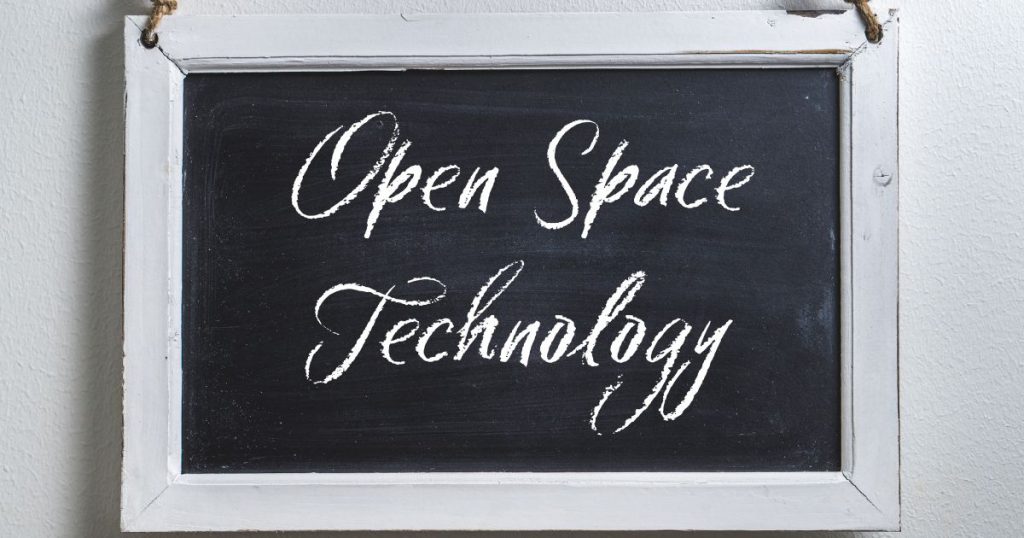Are you tired of awkward silences and stiff conversation at team-building events or social gatherings? But, are you equally tired with embarrassing corporate activities that lead you to wonder: are icebreakers necessary or just another tool for humiliation?
Icebreakers can be a savior in these situations, but they can also be the source of embarrassment and discomfort.
Contents
- Why Is The Corporate World So Obsessed With Icebreakers in Meetings?
- What Exactly Is An Icebreaker?
- Pros of Using Icebreakers in Meetings
- Cons of Using Icebreakers In Meetings
- When Are Icebreakers Appropriate?
- When Are Icebreakers NOT Appropriate?
- What To Use Instead Of Icebreakers? Handy Alternatives
- So, Are Icebreakers Necessary?
- Final Thoughts
You will learn:
- When icebreakers are necessary and when they’re best avoided
- The pros and cons of using icebreakers in formal settings
- Alternative ideas for things to do instead of traditional icebreaker activities
So grab a cup of coffee, get comfortable, and let’s start breaking the ice (or not!)
Why Is The Corporate World So Obsessed With Icebreakers in Meetings?
The corporate world is obsessed with icebreakers in meetings for good reason.
Business meetings are awkward. Teambuilding is awkward.
Icebreakers serve a useful purpose when used in a corporate setting, or even for start-ups – they lighten the mood and help people feel relaxed at the start of a meeting – instead of getting into the heavy stuff straight away, icebreakers are designed to, well, break the ice.
Icebreakers help to break down barriers and create a more inclusive atmosphere. They also can foster collaboration among team members by creating a shared understanding of one another’s personalities, interests, and skill sets.
Icebreakers are particularly important in teams where members may not have had any prior contact before the meeting began.
This allows each member to quickly become acquainted with their teammates while getting familiarized with working dynamics as well as expectations from higher-ups.
When participants share information about themselves during icebreaker activities it gives them space to open up and feel comfortable being around each other which helps build trust between teammates in order for them to work together better towards achieving common goals more effectively.
But, for many people, a sense of dread will fall over you when you hear the word icebreaker.
“Oh no, I’m going to have to think about an interesting fact about myself, aren’t I?”
A well-done icebreaker can lead to an efficient and productive meeting.
But, a cringeworthy and awkward icebreaker will leave the room feeling flat, with increased anxiety and fear.
Which one would you choose?
What Exactly Is An Icebreaker?
An icebreaker is an activity or exercise designed to encourage interaction and break down social barriers among a group of people.
They are typically used in social, educational, or professional settings to help individuals get to know each other and create a more relaxed and positive environment.
Icebreakers can range from simple games or questions to more structured activities, and their purpose is to promote communication, collaboration, and a sense of community among the participants.
Pros of Using Icebreakers in Meetings
Love them or hate them, icebreakers have some useful benefits when used meaningfully:
1. Building Rapport
Icebreakers provide an opportunity for individuals in a group to get to know each other on a personal level and build relationships. This can help create a more positive and supportive atmosphere, where people are more likely to work together effectively and support each other’s ideas.
2. Encouraging Interaction
Icebreakers can also help encourage interaction among individuals who might be shy or reserved. By providing a fun and non-threatening environment, icebreakers can make it easier for people to participate in discussions and share their ideas, which can lead to a more dynamic and productive meeting.
3. Creating a Relaxed Atmosphere
Icebreakers help break down social barriers and create a sense of community among participants. This can lead to a more relaxed and stress-free environment, where individuals feel more comfortable expressing themselves and are more likely to be productive.
4. Improving Communication
Icebreakers can also improve communication by encouraging individuals to listen to and understand each other’s perspectives. By providing a platform for individuals to express themselves, icebreakers can help foster greater understanding and collaboration among team members.
5. Boosting Creativity
Icebreakers can help boost creativity by getting everyone in the room engaged and interacting. By encouraging individuals to think outside the box and be more open-minded, icebreakers can lead to more innovative and creative solutions to problems.
6. Setting a Positive Tone
Starting a meeting with an icebreaker can set a positive tone for the rest of the session and help everyone feel more focused and energized. This can lead to a more productive and enjoyable meeting, where individuals are more likely to engage and contribute their ideas.
See also: 30+ Icebreaker Questions for Workshops
Cons of Using Icebreakers In Meetings
Icebreakers also have their downsides:
1. Icebreakers Are Time Consuming
Using icebreakers in meetings can take up valuable time that could be used for other important tasks. This can be particularly problematic in fast-paced environments where time is limited.
2. Not Everyone May Enjoy The Activity
Not everyone may enjoy the particular icebreaker activity that is chosen, which can lead to discomfort or disinterest among some participants. This can result in decreased engagement and a less productive meeting.
3. Inappropriateness
In some cases, icebreakers can be inappropriate or insensitive, particularly if they involve personal or sensitive topics. This can create an uncomfortable or negative atmosphere, and may even lead to conflict among participants.
4. May Not Be Suitable For All Froups
Icebreakers may not be suitable for all groups, such as those with a wide range of ages or cultural backgrounds. In these cases, the icebreaker may not resonate with everyone, or may even be offensive, which can negatively impact the meeting.
5. May Not Achieve the Desired Outcome
While icebreakers are designed to encourage interaction and build relationships, they may not always achieve the desired outcome. In some cases, individuals may not participate or may not engage with each other in a meaningful way, which can limit the effectiveness of the icebreaker.
When Are Icebreakers Appropriate?
Here are some situations when icebreakers are appropriate and can be effective and productive:
Icebreakers Work Better With Smaller Groups
Icebreakers are often most effective with smaller groups, where participants have an opportunity to interact and get to know each other on a personal level. This can be particularly beneficial for teams or groups who are just starting to work together or are in the process of building relationships.
For Building Team Spirit
Icebreakers are also appropriate when the goal is to build team spirit and create a positive and supportive environment. For events such as a company retreat or a team-building exercise, icebreakers can help create a sense of community and foster stronger relationships among team member who work closely together.
When Breaking the Ice is Necessary
Icebreakers are ideal for breaking the ice in situations where individuals may be unfamiliar with each other or may be feeling nervous or reserved. With a fun and relaxed environment, icebreakers can help individuals feel more at ease and encourage interaction and participation.
To Encourage Creative Thinking
Icebreakers can also be appropriate when the goal is to encourage creative thinking and innovative problem-solving. By getting individuals engaged and interacting with each other, participants will be encouraged to generate new ideas and perspectives that can lead to more creative solutions.
Setting a Positive Tone at the Start of a Session
Starting a meeting with an icebreaker can be an effective way to set a positive tone for the rest of the session. This helps individuals feel more relaxed and energized which can lead to a more productive and enjoyable meeting.
When Are Icebreakers NOT Appropriate?

Now let’s explore some areas where icebreakers are not appropriate:
Formal settings
Icebreakers may not be appropriate in formal settings or in situations where a more serious and professional tone is required. For example, in a business meeting or legal proceeding, an icebreaker may not be well received or may detract from the purpose of the gathering.
Sensitive topics
Icebreakers may not be appropriate when sensitive topics are being discussed. For example, in a meeting addressing issues such as discrimination, harassment, or abuse, an icebreaker may not be appropriate or may be perceived as insensitive.
Limited time
In situations where time is limited, an icebreaker may not be appropriate. For example, in a brief meeting where time is of the essence, an icebreaker may take up valuable time that could be used for more pressing matters.
Lack of interest
If the individuals in the group are not interested in participating in an icebreaker or do not see the value in doing so, it may not be appropriate. In these cases, forcing an icebreaker may only lead to discomfort or resentment.
Cultural differences
In some cases, cultural differences may make an icebreaker inappropriate. For example, in a group with a wide range of cultural backgrounds, certain icebreaker activities may be perceived as insensitive or may not resonate with everyone.
What To Use Instead Of Icebreakers? Handy Alternatives
So if you find icebreakers awkward or inappropriate for your setting, here are some alternatives you can try:
Direct Introductions
Direct introductions can be an effective alternative to icebreakers. By having individuals introduce themselves and share relevant information about themselves, such as their role and responsibilities, direct introductions can encourage interaction and help build relationships.
Open-Ended Discussion
Open-ended discussion can be an effective alternative to icebreakers when the goal is to encourage interaction and participation. By starting the meeting with a broad, open-ended question, individuals are encouraged to share their thoughts and ideas and to engage in a meaningful conversation.
Individual Reflection
Instead of ‘breaking the ice’ out loud, this could be done quietly or individually instead by asking people to reflect, meditate or mentally prepare for a few minutes at the start of a session.
So, Are Icebreakers Necessary?
Icebreakers can serve as a crucial tool in setting the tone and establishing a positive atmosphere in meetings and gatherings. By encouraging interaction and participation, icebreakers can help break down barriers, build relationships, and foster a sense of community among individuals.
Icebreakers can also help to ease tensions and reduce anxiety, especially in new or unfamiliar situations.
By providing a low-stakes and fun opportunity for individuals to get to know each other, icebreakers can help create a comfortable and relaxed environment that is more conducive to productive discussions and collaboration.
Icebreakers can also be an effective way to encourage creativity and critical thinking.
By presenting individuals with a new challenge or situation, icebreakers can encourage them to think outside the box and come up with new and innovative solutions.
However, not all individuals may see the value in participating in an icebreaker activity.
Icebreakers may be seen as awkward, unnecessary, or even inappropriate. In these cases, forcing individuals to participate in an icebreaker can lead to discomfort, resentment, and a negative atmosphere.
Not all icebreaker activities may be well-received by everyone.
Some activities may be perceived as insensitive, irrelevant, or not culturally appropriate. In these cases, icebreakers may only serve to further divide individuals and create a negative atmosphere.
In some situations, such as in formal settings or when sensitive topics are being discussed, an icebreaker may not be appropriate. In these cases, an icebreaker may detract from the purpose of the gathering and may not be well received by those in attendance.
Final Thoughts
In conclusion, whether icebreakers are necessary or awkward is a matter of perspective. While some individuals may see the value in participating in an icebreaker and view it as a crucial tool in establishing a positive atmosphere, others may see icebreakers as awkward, unnecessary, or even inappropriate. Ultimately, the appropriateness and necessity of icebreakers will depend on the specific needs and dynamics of the group.



